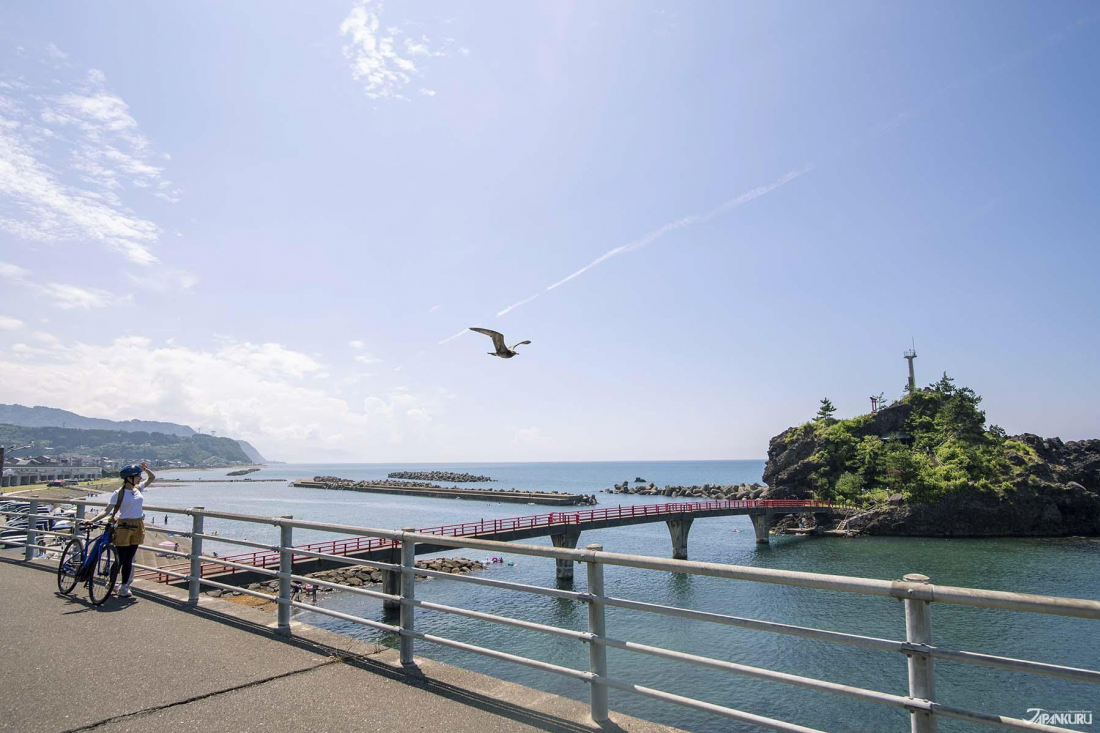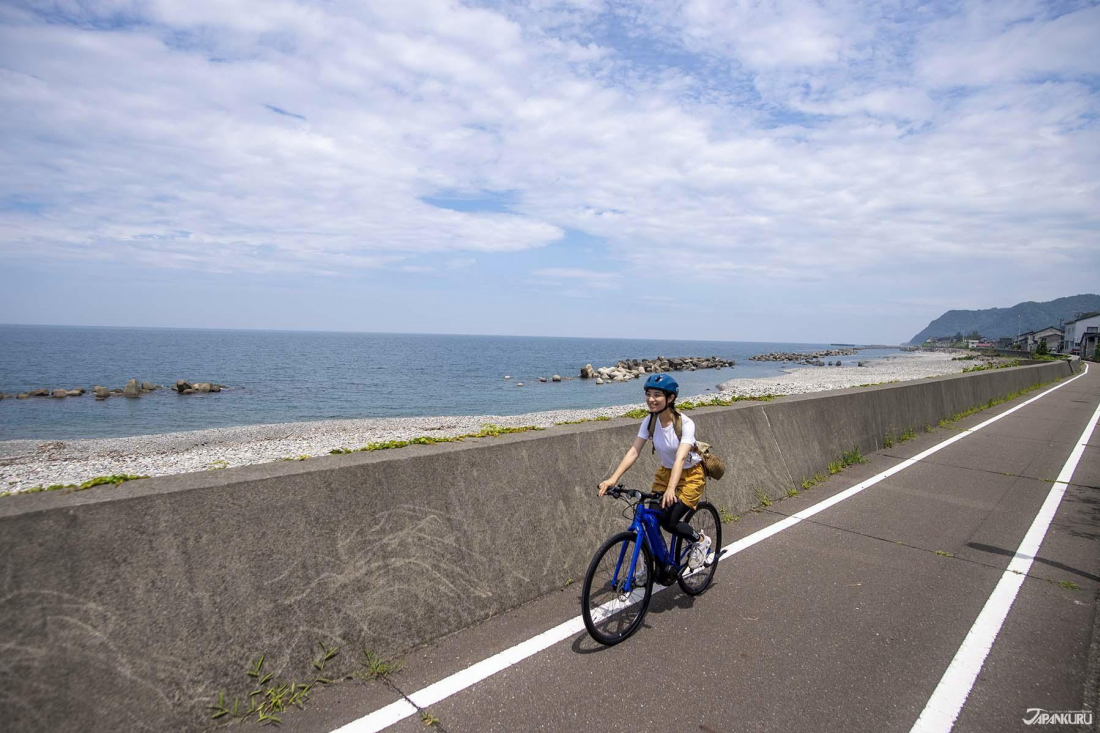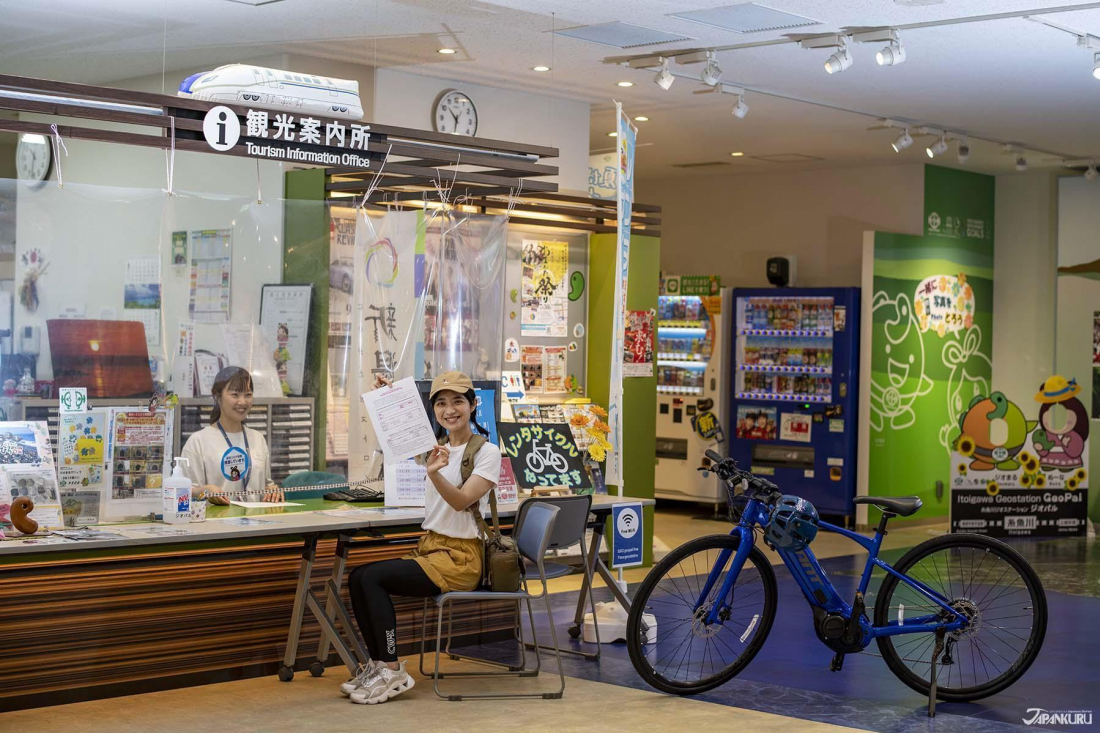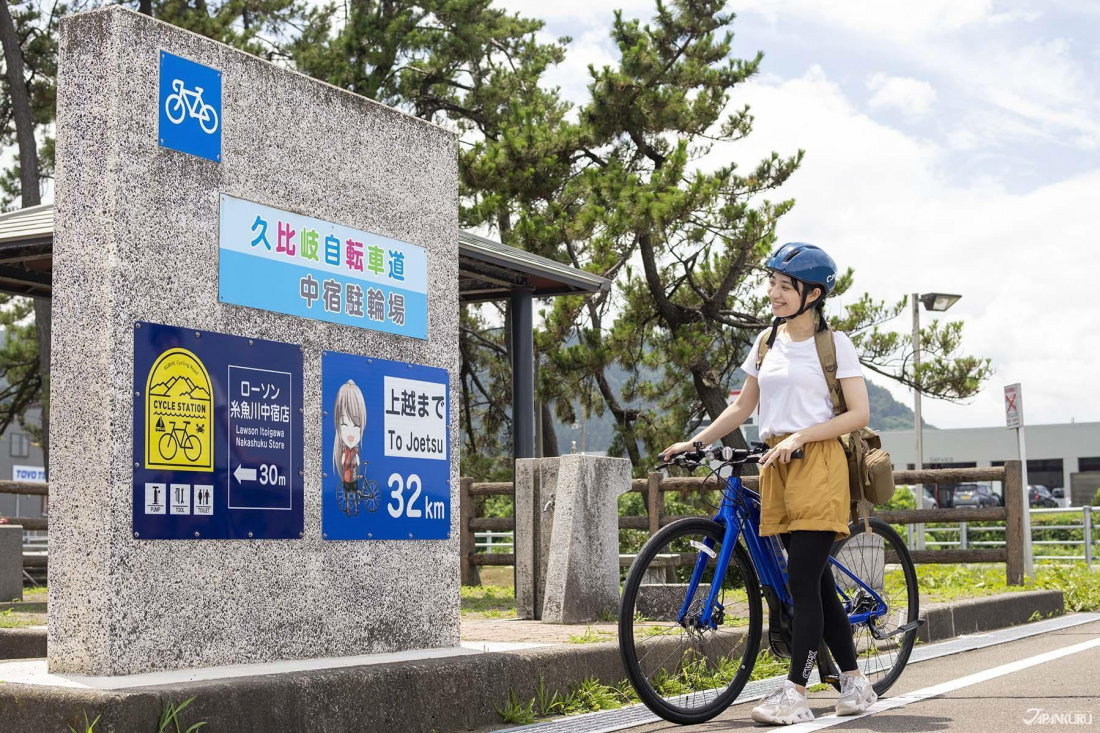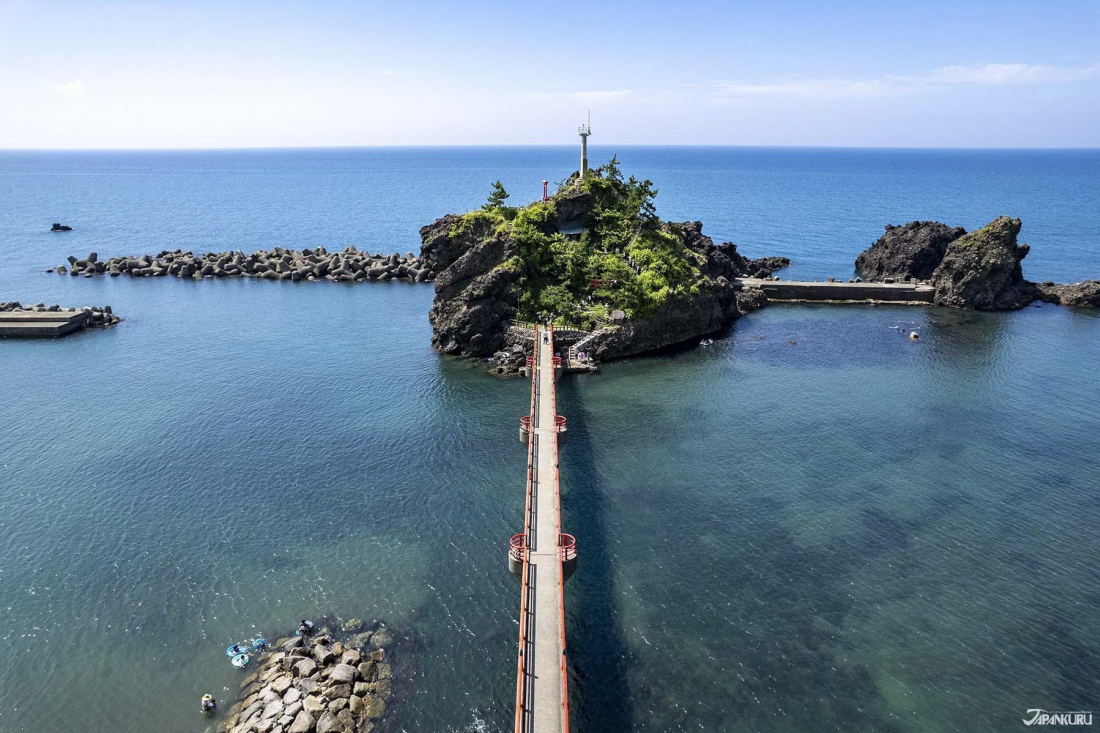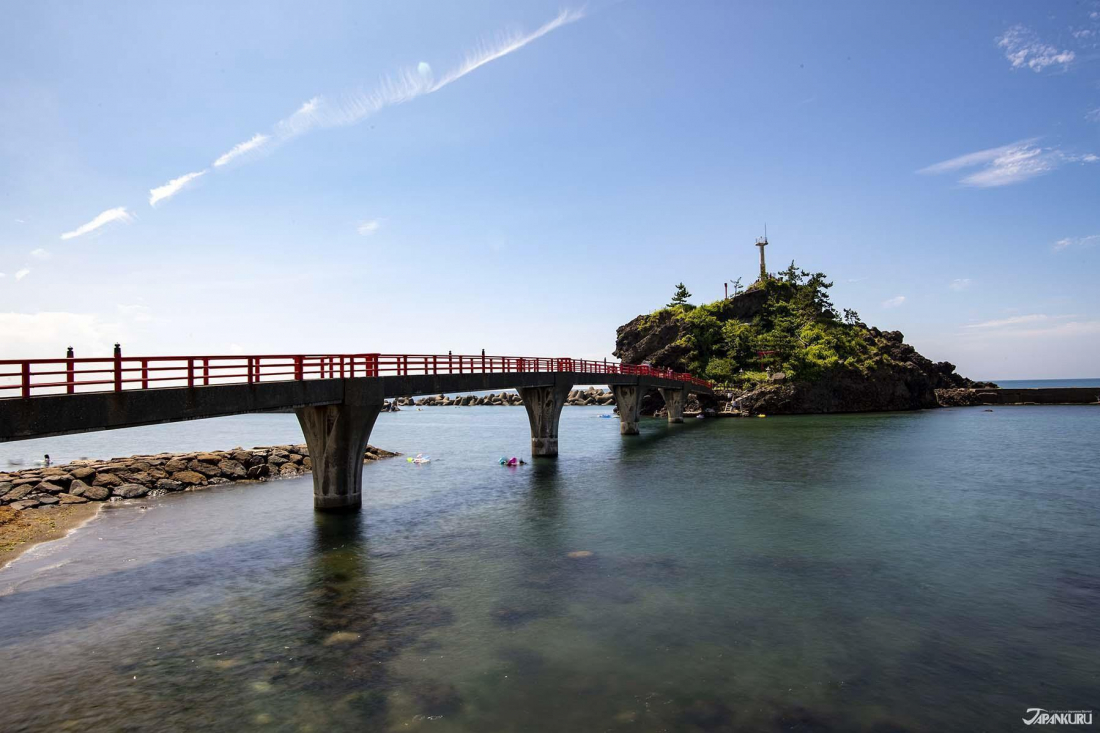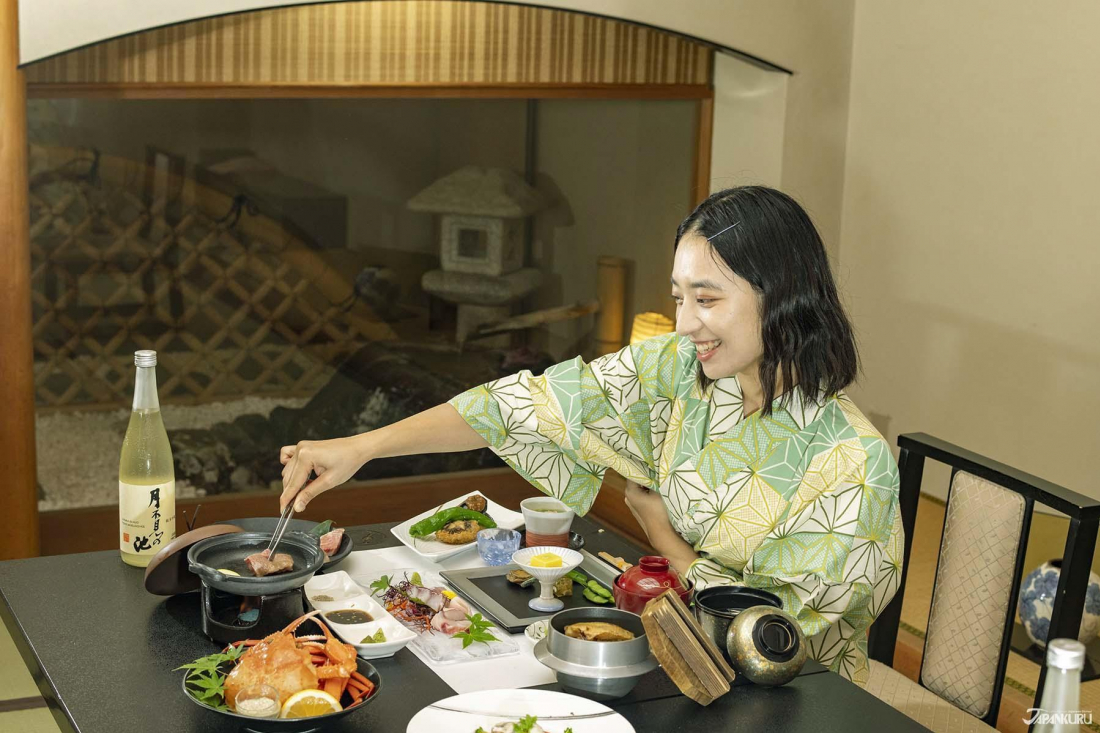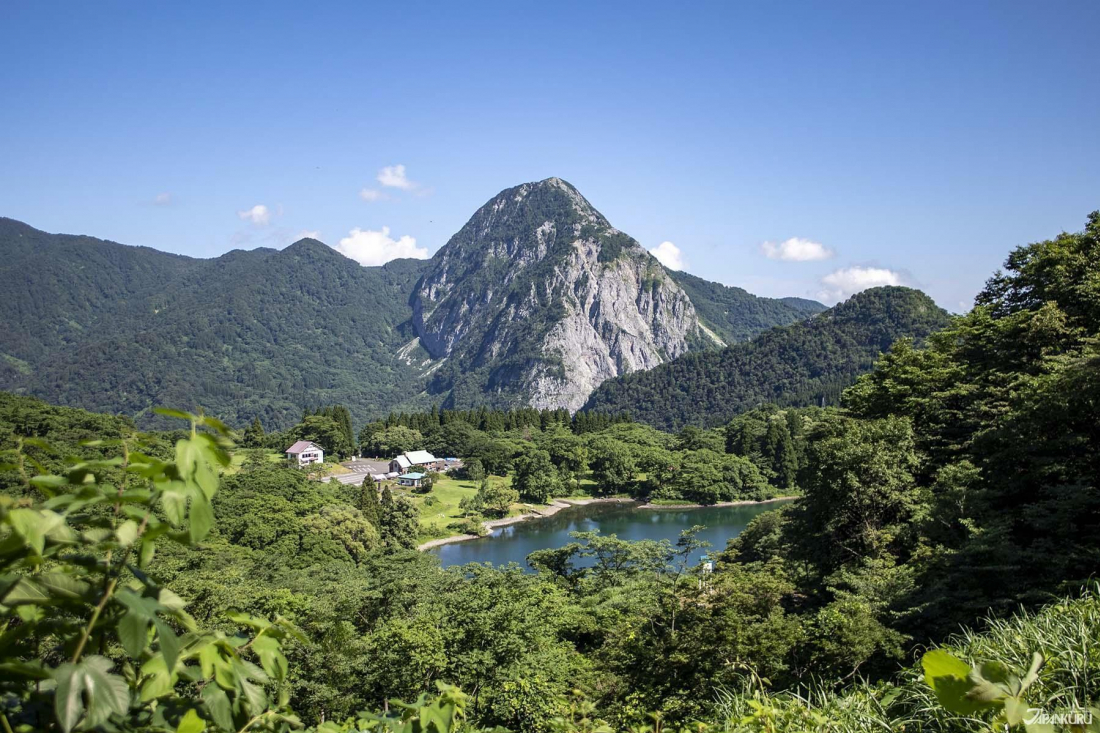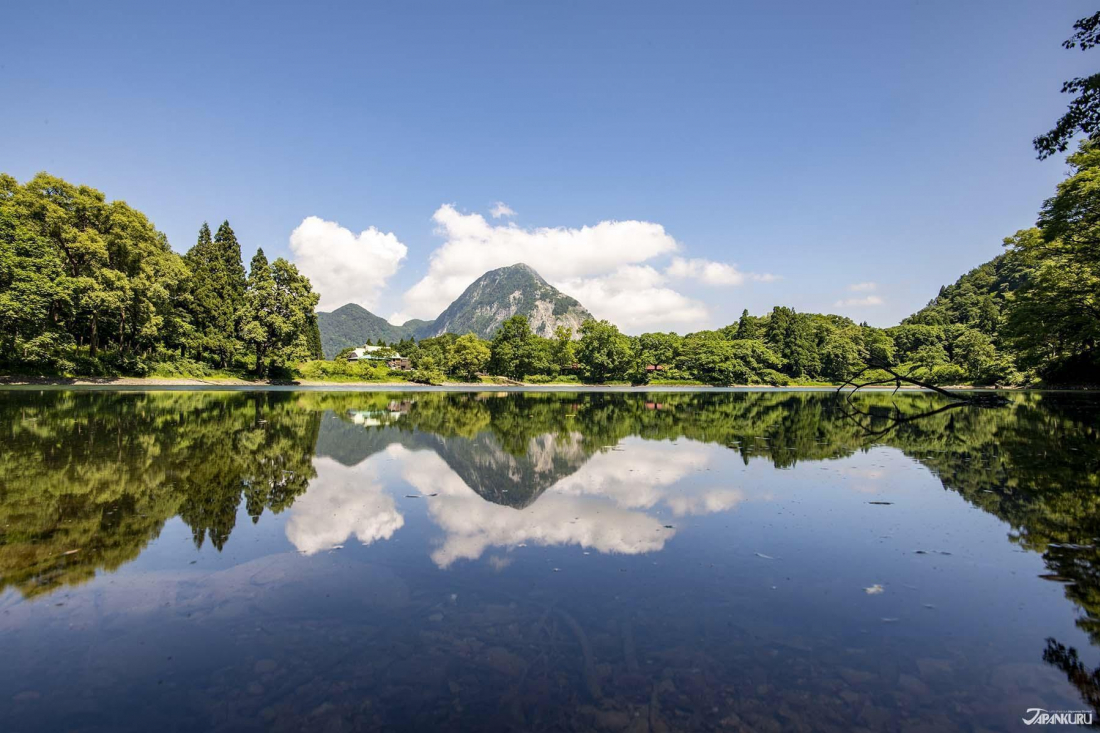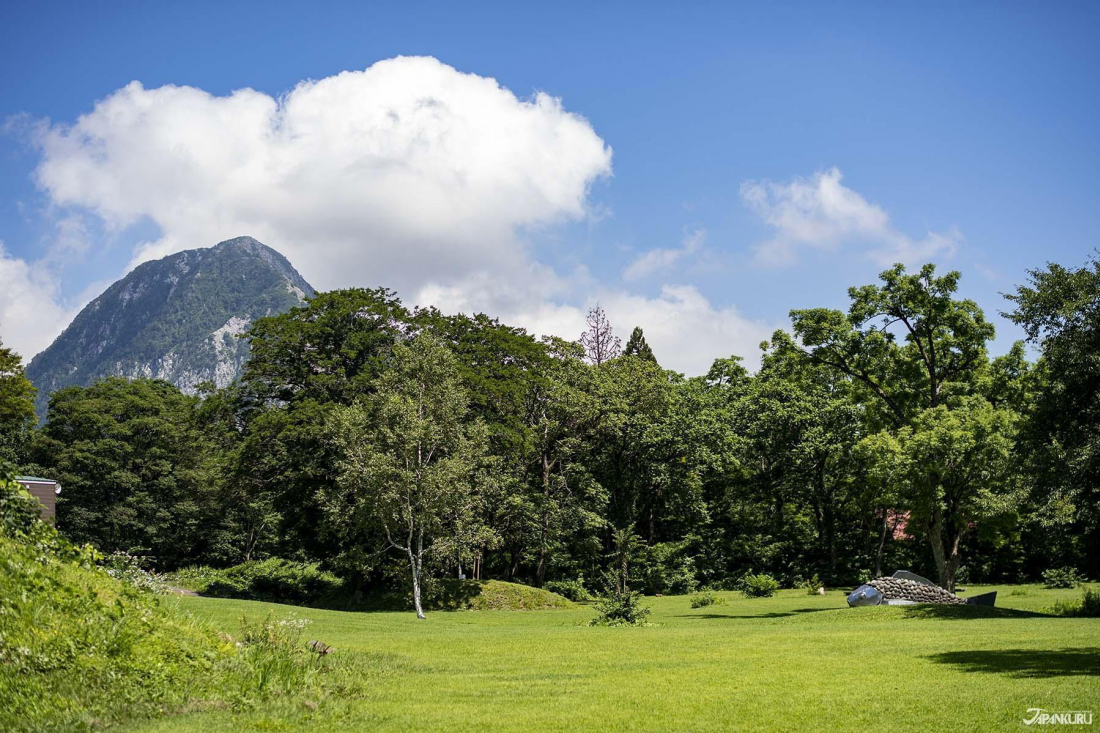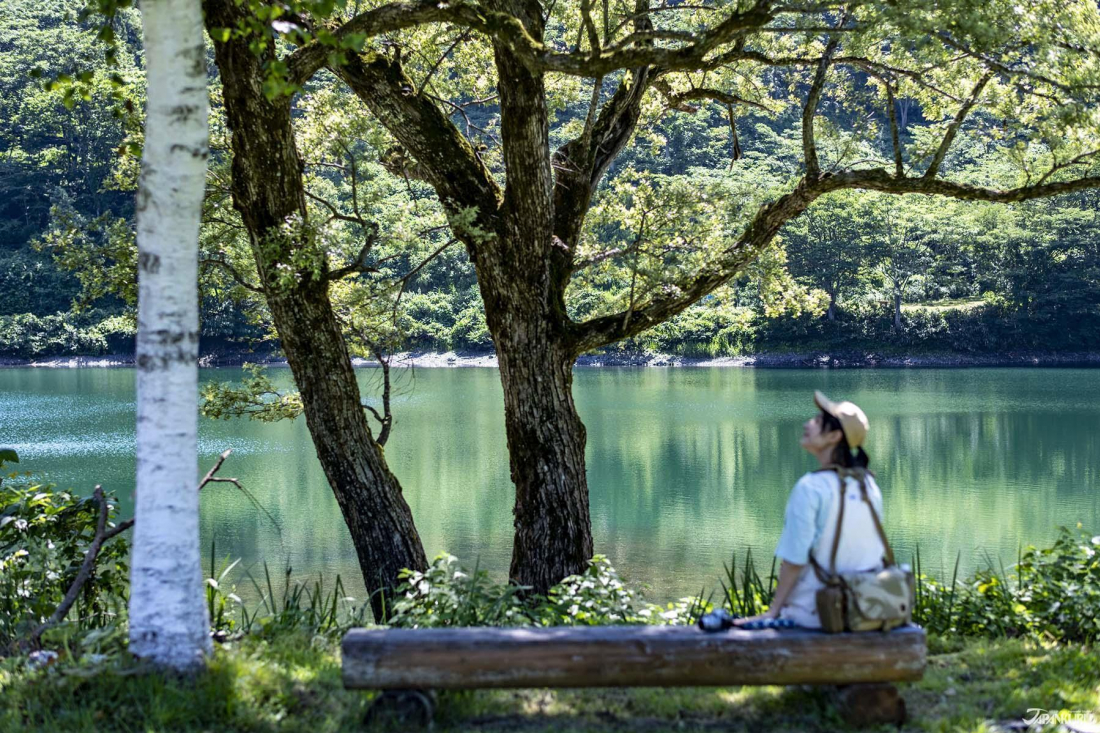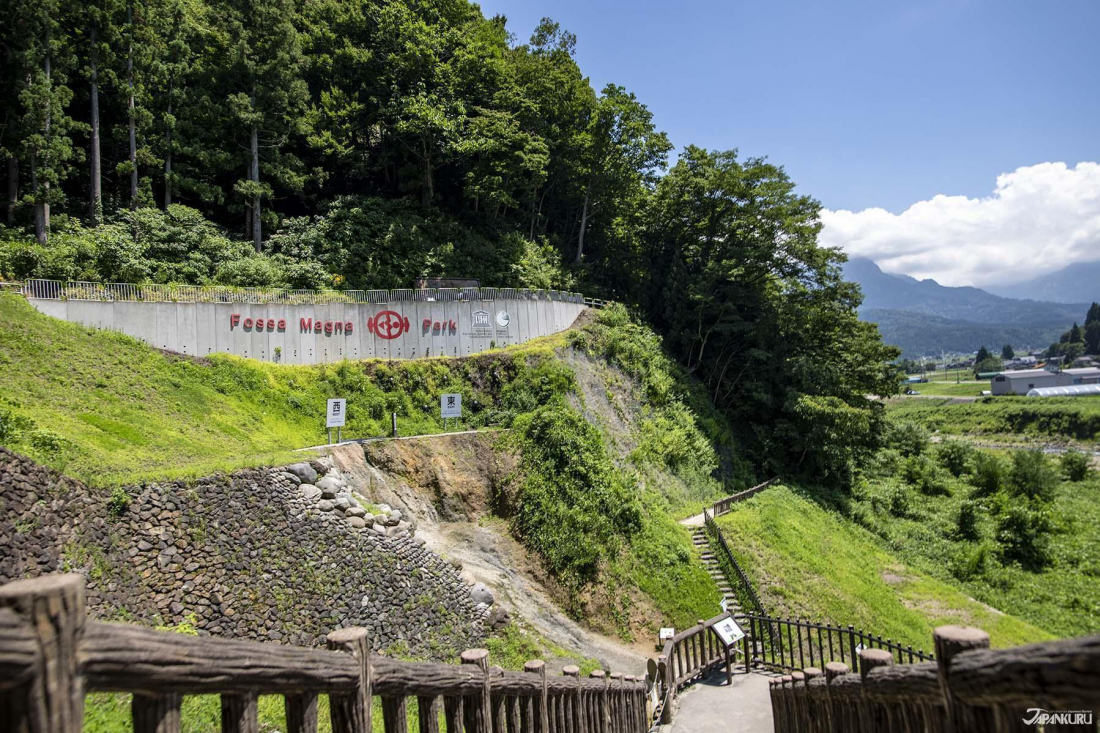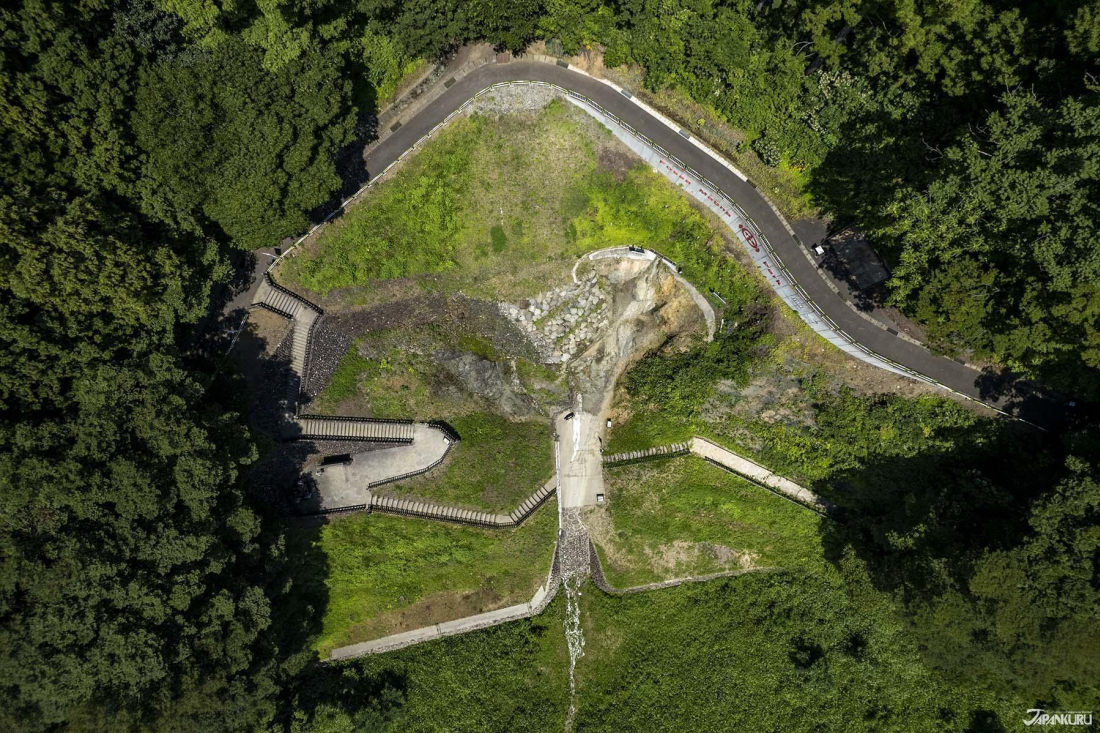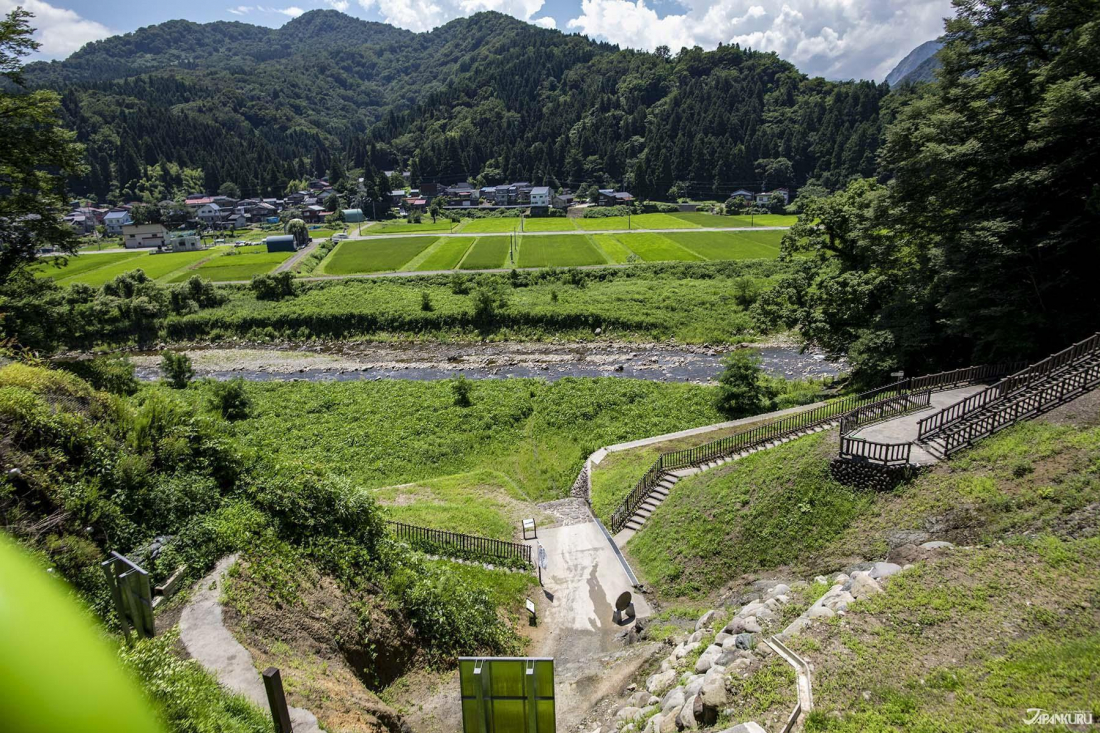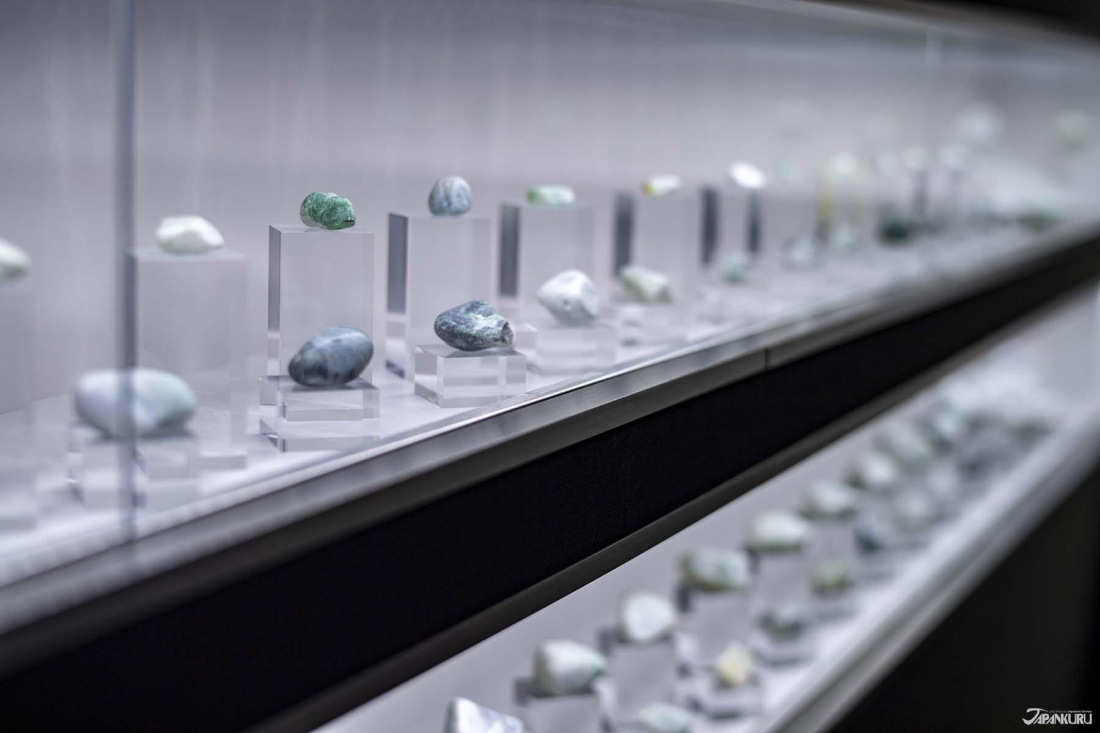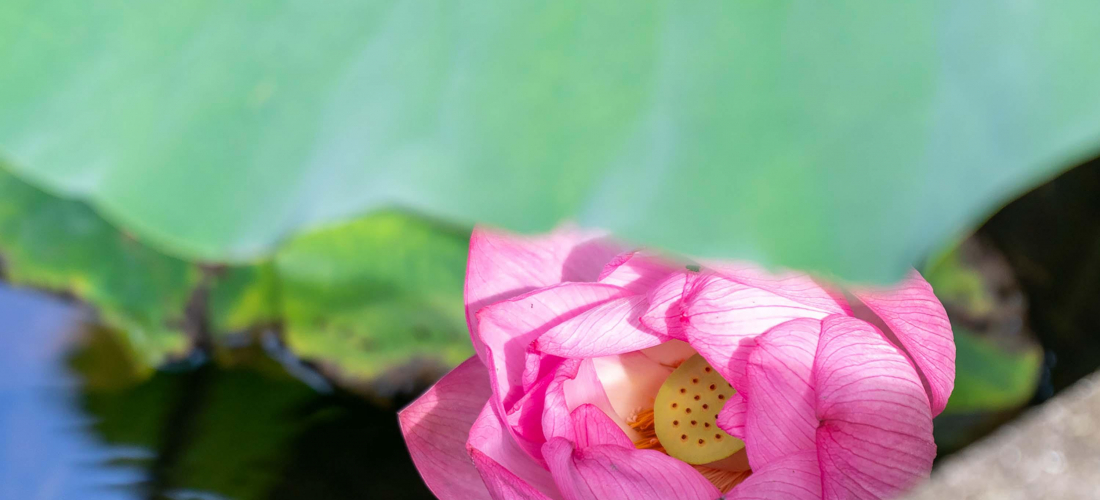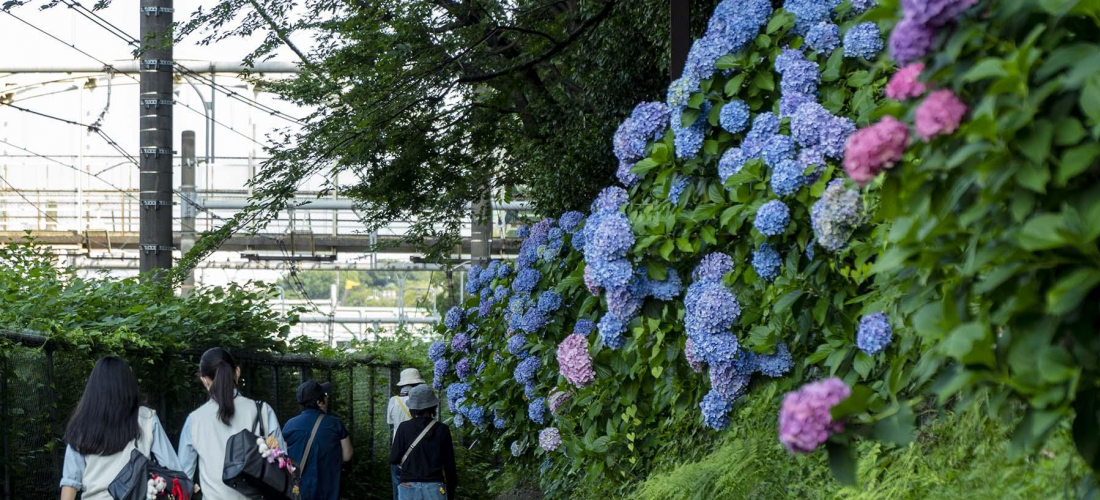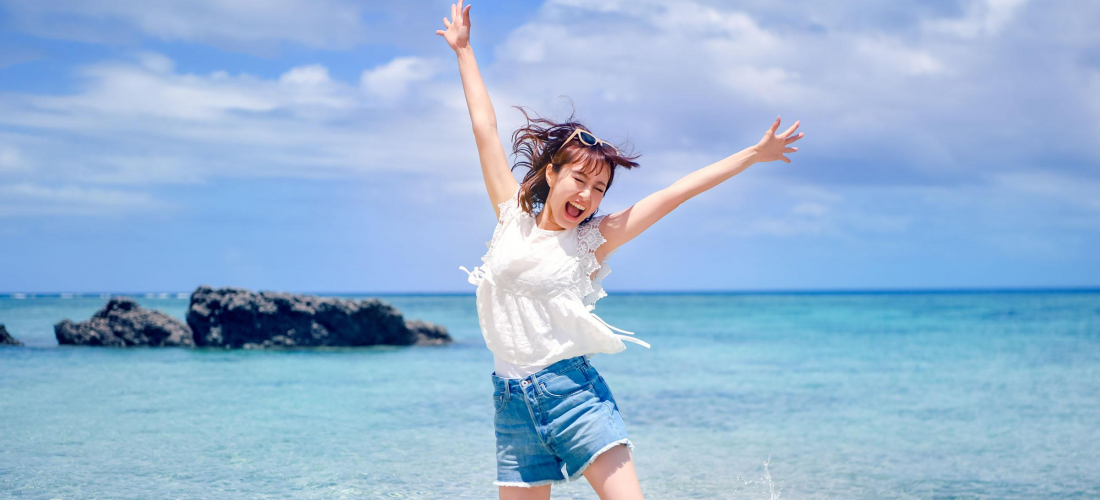
CONTENTS
On Japan’s western coast, halfway between the cities of Niigata and Toyama, is a small town tucked in between the mountains and the Sea of Japan. Beautiful and full of history, the mountains are said to be one of the world’s earliest jade production sites, the coast is famous for the famous crab catch, and the spectacular nature is the first area in Japan to be recognized as a UNESCO Global Geopark! All this in the “City of Jade,” Itoigawa.
A City of Jade Geological Tour
Itoigawa is found at the very westernmost tip of Niigata Prefecture, right on the border with Toyama. With beautiful blue coasts and mountains covered in green, filled with the sounds of singing birds and busy insects, the city has earned its comparison to jade in more ways than one. Itoigawa is one of the first UNESCO Global Geoparks in Japan, attracting hikers, campers, picnickers, cyclists, and all kinds of outdoor enthusiasts. And after a busy day out in the great outdoors, those travelers return to the city for luxurious meals of fresh-caught crab, straight from the sea.
Not only is Itoigawa a real source for the semi-precious stone jade, but the brilliant shades of blue-green make the very seas and hillsides shine like jewels, making it a true City of Jade. This time, we took the Hokuriku Shinkansen straight from Tokyo to Itoigawa Station, and then from there by renting both bikes and a car. Join us for one night and two days of beautiful sights and outdoor adventures in Itoigawa!
★ Transport Tips
Itoigawa is just an easy trip away on the Hokuriku Shinkansen, around two hours from Tokyo or under four hours from Shin-Osaka Station, and those traveling from overseas will definitely want to make good use of JR's Hokuriku Arch Pass! The pass costs 25,500 yen, and pass holders can enjoy unlimited rides on JR's trains from Kansai Airport to the Osaka, Kyoto, Kobe, and Nara areas, through Japan's northwestern Hokuriku region, and even all the way to Tokyo (including the Narita and Haneda airports) for a whole week. This includes ordinary trains, express lines, and even the speedy shinkansen, but also local railways like the Oito Line connecting Itoigawa and Minami-Otari, the Etsumi-Hoku Line, the Noto Railway, and the Toyama Railway, too. You can check the pass's validity range, and all the other details, on the official Hokuriku Arch Pass homepage.
Day 1 ・ By the Sea: Biking the Coastline & Eating Crab
In Itoigawa, City of Jade, rumor has it that you can pick jade right from the pebbles on the shore. Along this beautiful coastline, the Kubiki Cycling Road is a popular destination for Japanese bike riders, and for our first day in Itoigawa, we searched out some of the city's best seaside attractions while cycling along the water.
Itoigawa Station Bike Rentals & Retro Railway Experiences
Stepping off the Hokuriku Shinkansen and arriving in Itoigawa, our first stop was the Geo Station GeoPal, a tourist information center constructed as part of the station building. Located by the first-floor Alps Exit, the Geo Station includes not only a tourist information counter, but also a great collection of model trains, and the KIHA52 Waiting Room, filled with stylish retro train cars! The KIHA52 Waiting Room includes a classic KIHA52-156 (キハ52-156) car that really used to travel the rails along the Oito Line, alongside others like a replica of a dining car from the Twilight Express sleeper train that made its way between Osaka and Sapporo. The insides of the replica dining car are all fitted out just like the real thing, and you can enter each of the trains to take pictures and enjoy the cool retro design. Whether you're a railroad fanatic or not, you're bound to love the fun of this unique station waiting room!
With bike rides in the sea breeze as an essential part of this itinerary, we rented bicycles right from the tourist information desk at Geo Station GeoPal! They offer quite a few different kinds, from standard road bikes for kids and adults, to electric and hybrid bikes for easy cruising. Depending on the bike, rental fees vary from 1,000 to 2,000 yen per day. From October this year (2022), they're even adding a collection of handsome new E+ road bikes made by Giant, which are bound to intrigue cyclists who like new tech. Fortunately, renting a bike is simple! You just fill out a simple form and show the staff your passport or other ID, and you're on your merry way. When you're done with the bike and lock, just bring them back to the station during business hours. For detailed information on bicycle rentals, see the Itoigawa Sightseeing Association website.
Of course, if a bike isn't for you, you can also find car rentals right near the station and make this all a road trip!
Geo Station Geopal (ジオステーション ジオパル)
1-7-47 Omachi, Itoigawa, Niigata (Itoigawa Station 1F Alps Exit)
Official Page (jp)
The Kubiki Cycling Road & Itoigawa’s Jade Coast
Itoigawa's shoreline is often referred to as the "Jade Coast," a poetic name with very concrete origins. Itoigawa's mountains are filled with rough hunks of jadeite (the rarer, more valuable form of jade), and as nature takes its course, pieces of the stone fall into rivers, get washed to the ocean, and then get slowly smoothed and polished by the relentless buffeting of waves against the stony beach, ready to be picked out by anyone with a knack for treasure hunting. There are local stories of people sifting through the rocks littered along the Itoigawa shore and discovering rough pieces of jadeite worth more than a million yen (8~9,000 USD), and news coverage of these miraculous finds has only grown Itoigawa's reputation as the City of Jade. These beaches may not be sandy, but locals still come every summer to spend days on the water, taking dips in the sea and relaxing on the smooth pebbles.
The Kubiki Cycling Road is a bicycle and pedestrian path built on top of what was once the Old Hokuriku Railroad, which runs in a squiggly line sometimes meeting with the National Route 8 highway that stretches along the coast. This 32-kilometer bike path can take you all the way from Itoigawa to the neighboring city of Joetsu, and cyclists can enjoy frequent glimpses of the Sea of Japan, with no cars to worry about as you ride. Since the route used to bring trains down the coastline, it even passes under a handful of red brick tunnels, once used by the steam engines run by JR's predecessor. Starting at one end with a big sign and an appearance from Rin-chan, the Kubiki Cycling Road mascot, this long path also has plenty of rest stops, with places to relax and give your legs a break, plus plenty of spots to stop for refreshments.
Kubiki Cycling Road Itoigawa Starting Point (久比岐自行車道 糸魚川側スタート)
Nakashuku, Itoigawa, Niigata
Official Page (en)
Benten-iwa Rock
Ride north along the Kubiki Cycling Road, and you'll come upon the small coast of Nou, where a vermillion bridge connects the mainland to a striking island of jagged rock poking out of the sea. This is the Benten-iwa Rock, an Itoigawa landmark! A million years ago, the small island just off the coast was formed by an underwater volcanic eruption, and these days Benten-iwa is an important part of the Itoigawa UNESCO Global Geopark. The rock is home to the Nou Lighthouse, built for the ships coming in and out of the Nou fishing harbor, and the Itsukushima Shrine, which guards the sea. Standing in such a dramatic spot by the sea, the lighthouse has been recognized as a "Lighthouse of Love" by the Japanese Romantics Association, and draws quite a few couples.
Surrounded by both rocky shores and sandy beaches, Benten-iwa Rock is already a unique destination, not to mention to the unusual juxtaposition of the Nou Lighthouse and Itsukushima shrine. The Japankuru team managed to stop by on a beautiful sunny day, and the beach was full of families enjoying the water, the weather, and the view. Of course, it wouldn't be a "Lighthouse of Love" without a little help from the magical sunset to add a little romance to the scene, and the panoramic view from the lookout deck is something else. But the view of the sun setting over the water behind this enormous rocky island is also worth catching from across the bridge on the mainland.
The scenery takes on a new kind of beauty for one day each year, when Benten-iwa Rock becomes the site of the Nou Seaside Fireworks Festival, and people flock to the rock to enjoy the summer event!
Benten-iwa Rock Geosite(弁天岩ジオサイト)
Nou, Itoigawa, Niigata
Official Page (en)
Marine Dream Nou Rest Stop & Crab Delights
Get back on your bike and head about 1.4km from Benten-iwa Rock, and you'll find Marine Dream Nou, a highway rest stop made for enjoying the bounty of the sea. Itoigawa is located right between two major fishing ports, and this highway rest stop is a great place to enjoy a variety of fresh seafood, although Itoigawa's real claim to fame is the amazing fresh crab. A whole wall of the rest stop is taken up by a row of small shops run by local crab boats, who bring their catch straight to the market, called Kaniya Yokocho (カニや横丁), literally "Crab Alley." Got a kitchen available? Grab a few crabs to take home and eat later! Ready to eat your crab on the spot? Then just choose your crab of choice, let the shop know, and they'll serve it up complete with a whole tool kit for cracking the shell.
The most popular seafood in Itoigawa is Benizuwai crab, AKA red snow crab, and these deep-dwelling crustaceans can technically be caught anytime year-round. However, in order to avoid overfishing, the period from January to February each year has been designated as off-season for the red snow crabs. Fortunately, these popular crabs aren't the only delicious seafood to be had at Marine Dream Nou. The rest stop also has a market selling all kinds of shellfish, and the seafood is offered freshly grilled during the summer. Foodies traveling to Itoigawa will tell you, Itoigawa is all about eating all kinds of seafood! In the early summer, there are food-based events such as all-you-can-eat crab days, and throughout the year there are a number of seafood restaurants open throughout the rest stop. Look for rice bowls covered in fresh seafood, seafood ramen, seafood snacks, and more – plus souvenirs too.
One unique shop worth mentioning is Nousui, which works to connect local students with local producers. Quite a few of the products sold in the store are items developed in part by students attending Niigata Prefectural Maritime High School, from packs of curry to soft drinks made from local plants. Perhaps the shop's most famous product is their salmon fish sauce called Saigo-no-itteki (最後の一滴), literally "the last drop". At the Nousui shop, customers can order ice cream made from fresh milk from local farms, which is topped with a caramel syrup made with Saigo-no-itteki fish sauce!
In addition to all that, Marine Dream Nou also has its own rental bike service station. Bikes rented at Itoigawa Station can't be left here (they have to be returned to the location where they were borrowed), but the service station is convenient if you encounter any problems with the bike while you're out riding.
Marine Dream Nou (道の駅「マリンドリーム能生」)
3596-2 Noukodomari, Itoigawa, Niigata
Official Website (en)
Oyashirazu’s Breathtaking Sea Cliffs & Red Brick Tunnels
While the first half of this bike tour was all about following the Kubiki Cycling Road along the Jade Coast east of Itoigawa Station, the other direction is equally worth seeing. West of the station, towards Toyama Prefecture, the precipitous cliffs along the water are known for their beauty, but have also been dubbed "The Most Dangerous Crossing Under Heaven" (天下の険). Thought to be where the Japanese archipelago split off from the Eurasian continent 20 million years ago, the Oyashirazu-koshirazu area is an important part of the Itoigawa UNESCO Global Geopark, and the many millions of years of erosion have made the Cliffs of Oyashirazu a must-see destination.
The 15km stretch of coastline in Oyashirazu-koshirazu has been famous around the Hokuriku region for its risky heights since ancient times. Back in the Edo period (1603-1868), the daimyo (feudal lord) of the Kaga Domain would take this spine-chilling route on his way to and from the capital, and it's said that local villages would gather to build a seawall in order to protect the daimyo from the waves as he passed dangerously close to the water. Even the name implies danger. "Oyashirazu" (親不知) literally means "not knowing your parents," and it's said that the root of that moniker comes from the ancient cliff road being so precarious that travelers would have no attention to spare for their companions while traversing it – not even a parent or child.
In more recent years, as people eventually found ways to safely cross the dangerous Cliffs of Oyashirazu, more modern methods of travel were constructed, including the modern National Route 8 highway for cars and the Old Hokuriku Railroad for trains, later followed by the Hokuriku Expressway. The route across these storied cliffs is no longer daunting, and these days people can enjoy the stunning views without worry, following the Oyashirazu Community Road (originally the very first modern road along the cliffs) and passing through the old red brick tunnels left behind by the Old Hokuriku Railroad.
At the eastern end of the path that heads through the Old Hokuriku Railroad's tunnels, this narrow staircase leads down to a rocky little beach between cliffs. This spot is actually the starting point of the Tsugami Shindo, a vertical hiking trail that heads up into Japan's Northern Alps, a popular mountain climbing destination sometimes called "The Roof of Japan." The Northern Alps have several peaks 3,000 meters or more above sea level, and it's said that the spine of this long mountain range starts right here, at sea level, on the Itoigawa coastline. It's a spot with geographical significance, but whether that interests you or not, it's not hard to enjoy the sun shining in between the cliffs, glittering on the water and the rocky beach of this little alcove.
Oyashirazu Community Road (親不知コミュニティロード)
Ichiburi, Itoigawa, Niigata
Official Page (en)
★ Accommodation Tips: Sasakura Onsen Ryuunso
After a whole day down by the seashore, the Japankuru team decided to spend the night at Sasakura Onsen Ryuunso, deep in the forested mountains of Itoigawa – a convenient location for exploring the mountains the next day. Backed up against the tall mountains, looking out on the serene Japanese countryside, Sasakura Onsen first opened its doors more than 300 years ago, making it Itoigawa's oldest hot spring resort. The Ryuunso facilities still used today date back to 1940. Sasakura Onsen has a number of different hot spring baths, including a sodium bicarbonate spring said to be good for the skin, the large bath called Ryuun-no-yu, and even their Senjuso scenic view bath, which comes with a great view of the mountainside. Surrounded by tranquil greenery and plenty of fresh air, it's a popular destination for those searching for a peaceful getaway.
Most of the rooms in Ryuunso are spacious Japanese-style rooms with tatami mats and futon mattresses to sleep on, but there are a few Japanese-Western-style rooms as well. For those looking for the ultimate relaxation experience, you can even choose a room with a massage chair. Breakfast and dinner are provided to start and finish the day right, as with most onsen hotels, and the meals are made not only with local seasonal ingredients, but also the spring water itself! The focus is on preserving the natural flavor of the fresh ingredients, leading to healthy meals that leave you feeling satisfied and refreshed.
Sasakura Onsen Ryuunso (笹倉溫泉 龍雲莊)
5804 Odaira, Itoigawa, Niigata
Check-in/Check-out:15:00~ / ~10:00
Phone: 025-559-2211 (available 9:00 – 21:00)
Online Reservations | Official Website (jp)
Day 2 ・ In the Mountains: Exploring Jade Gorges & The UNESCO Global Geopark
Onward from the pebbly beaches and precarious cliffs of Itoigawa's coast, the second day brought us further inland, to hike into the jade realms of the mountains, and the core of the Itoigawa UNESCO Global Geopark.
The Takanami-no-Ike Pond & Mount Myojo Campsite
Reaching 1,188 meters above sea level, Mount Myojo was once a coral reef below the ocean waves, but after 300 million years of changes in the earth's crust, the now towering peak has become one of the standout attractions at Itoigawa UNESCO Global Geopark. The harsh rock walls of the mountain reveal the lingering memory of hundreds of millions of years through a wealth of fascinating fossils, but on a plateau about 540 meters above sea level, the placid Takanami-no-Ike Pond reflects a more serene vision of the mountain and surrounding greenery. Between the glassy pond and the surrounding vegetation, this fantastic view shifts throughout the year to show the changing of the seasons, but Mount Myojo reflecting in the water is always the star of the show!
The area around Takanami-no-Ike Pond is a popular campground, and nearby there are also walking trails, golf courses, some restaurants and shops, and places to go boating or fishing. Whether you have time to stay the night, or can only spend an hour or two strolling around the lake and enjoying the view, it's a wonderful place to enjoy the mountain air.
Takanami-no-Ike Campgrounds (高浪の池キャンプ場)
19336 Kotaki, Itoigawa, Niigata
Hours: 9:00 – 16:00
Closed: late November ~ late April/early May
Official Page (jp)
Kotakigawa Jade Gorge
Below Mount Myojo, the clear waters of the Kotaki River slip between banks made of rough boulders – huge chunks of jadeite. This is the Kotakigawa (or Kotaki River) Jade Gorge, at the very heart of this City of Jade. Most of Itoigawa's jade comes from two areas, Kotakigawa Jade Gorge and the Omigawa Jade Gorge, but this area along the Kotaki River is thought to be the very first jade production site in Japan, and possibly the world. As such an important part of the Itoigawa UNESCO Global Geopark, the gorge is also an officially-recognized Japanese natural monument, and travelers come from near and far to see the magnificent scenery.
It's hard to resist the cool, clean water of the Kotaki River, so visitors often wade into the shallows, affording an even better look at the beautiful variety of jadeite ore as well. The rare stones gleam in the sunlight, under the crystal clear water. Of course, Itoigawa takes the protection of the Kotakigawa Jade Gorge very seriously, hoping to preserve this beautiful local landmark (and national natural monument) for generations to come. Visitors are asked to take care not to damage the local wildlife, and collection/removal of any stones is outright forbidden. (Head back to the ocean for that!)
Kotakigawa Jade Gorge (小滝川ヒスイ峡)
Kotaki, Itoigawa, Niigata
Official Page (en)
Fossa Magna Park & The Border Between East and West Japan
Constructed in 1991, Fossa Magna Park is in many ways the predecessor to Itoigawa UNESCO Global Geopark, and it's still a major geological attraction in its own right. Heading down the stairs through the middle of the park, visitors' eyes are met with a rock wall split down the middle into different colors on the right and left, which mark the geographical dividing line that splits the east and west sides of Japan. The Itoigawa-Shizuoka tectonic line, as it's called, is a major geographical feature, which not only divides the two halves of Japan, but also the boundaries between the North American and Eurasian tectonic plates!
To help visitors understand the awesome importance of the geographical landscape found at the park, there are quite a few written explanations and visual depictions of how this geological formation came to be, which also makes it a popular destination for school trips and family excursions. Plus, on the other side of the rock wall, you can look out on a picturesque view of Itoigawa.
Fossa Magna Park (フォッサマグナパーク)
2482 Negoya, Itoigawa, Niigata
Hours: 24/7
Closed: closed for winter
Official Page (en)
The Fossa Magna Museum
At Itoigawa UNESCO Global Geopark, not only can you see some fascinating geological features, but there are also ways to dive much deeper into the mysteries of geology! The Fossa Magna Museum at Miyama Park is the place to go for all kinds of information on the Itoigawa UNESCO Global Geopark, with exhibitions that make the local landscape interesting to visitors of all ages. There are signs, videos and animations, plus plenty of real specimens on display to help you learn just what's going on in and above the earth's crust, and how this land became the unique formation it is today.
The museum also has a large collection of unique stone specimens, from ragged hunks of jadeite ore to rocks from around the world. Seeing the jade in its rough form, as it comes out of the ground, and also taking a look at some of the works of art that humans have made with the rock, it's not hard to appreciate the magic of nature. If you picked up your own jade rock on the Jade Coast that you think might be real jadeite, you can actually take it to the museum to get it identified for free, or even use the samples provided to try to identify it yourself!
While jade might be the biggest focus in Itoigawa, an area called "Fossil Valley" can be found right near the Fossa Magna Museum, full of coral reef fossils from 300 million years ago. Museum guests can actually rent excavation tools and head out to the valley to take a look for themselves! If you try your hand at paleontology and come upon some interesting finds in the valley, you can take these rocks to be identified at the museum too (up to five per person). Between the museum's clean architecture, the excellent design and exhibits, and the knowledgeable experts, a trip to the Fossa Magna Museum adds a new level of interest to the whole Itoigawa region.
Fossa Magna Museum (フォッサマグナミュージアム)
1313 Ichinomiya, Itoigawa, Niigata
Hours: 9:00 – 17:00 (last entry: 16:30)
Closed: days following public holidays, New Year's holidays (12/28 ~ 1/4), also Mondays in Dec ~ Feb
*Please check the official website for any other temporary closures.
Admission: 500 yen (free for high school students and younger)
Official Website (en)
Tanimura Art Museum & Gyokusuien Gardens
Itoigawa is home to one very unique art museum, with unusual architecture, an interesting internal layout, and just ten major items on display inside – ten Buddhist statues. The one-of-a-kind Tanimura Art Museum was designed by Japanese Order of Culture recipient Togo Murano, as a location for the private collection of sculptor Seiko Sawada, another Order of Culture recipient. The surprising shape of the building is meant to resemble desert ruins rising from the sand along the Silk Road, while the cave-like interior is shaped to make visitors feel like they've entered into a stone grotto. While the collection of Buddhist statues inside is small, each one is artfully placed and lit with the utmost care. In much of the structure it's hard to find obvious windows, but hidden skylights and artificial lighting work together to bring light to the cavernous rooms, shifting with the seasons and the position of the sun.
Outside, away from the Tanimura Art Museum's mysterious interior, the grounds also contain an ornamental garden designed by Kinsaku Nakane, former president of the Osaka University of the Arts. The Gyokusuien Gardens teahouse has floor-to-ceiling windows looking out onto the greenery, and inside are elegant tables made from huge, polished slabs of jade, reflecting the garden view. After exploring the Tanimura Art Museum, we recommend stopping by to walk through the garden, and enjoy a cup of coffee or green tea by the windows in the teahouse.
Tanimura Art Museum & Gyokusuien Gardens (谷村美術館・玉翠園)
2-1-13 Kyogamine, Itoigawa, Niigata
Hours: 9:00 – 16:30 (last entry 16:00)
Closed: days following public holidays, New Year's holidays (12/29 ~ 1/3), also Tuesdays in Dec ~ mid-March
Official Website (jp)
Itoigawa: A City of Jade, From the Inside Out
On this trip through Itoigawa, we climbed from beautiful beaches dotted with jade to high mountain peaks and rushing rivers filled with the semi-precious stone, seeing all the ways that this natural gift brings out the beauty of this important geographical destination. With its blue sea, blue sky, green mountains, and crystal clear water, perhaps it's no surprise that Itoigawa has long been a valued source of jade for Japan. From our point of view, the gentle blue-green of real jade, made from the jadeite mined from these mountains, looks just like the landscapes it came from. But to see what we mean, you'll just have to go see it for yourself!
For more info and updates from Japan, check Japankuru for new articles, and don't forget to follow us on Twitter, Instagram, and Facebook!
Details
NAME:Itoigawa (糸魚川)
PROFILE
Follow us @Japankuru on Facebook, Instagram, and Twitter!
COMMENT
FEATURED MEDIA
VIEW MORE
Narita Airport Tax-Free Shopping List 나리타공항 면세점 쇼핑 리스트 #pr #calbee #jagapokkuru #japanesesnacks #japanesefood #japanesesouvenir #japantravel #japantrip #naritaairport #hokkaido #나리타국제공항 #나리타공항면세점 #나리타공항면세점과자 #일본공항면세점 #일본기념품쇼핑리스트추천 #공항면세점쇼핑리스트 #일본과자추천 #면세점일본과자 #일본기념품추천 #일본과자 #자가폿쿠루 #일본간식 #일본과자쇼핑 #일본면세점필수템 #일본기념품쇼핑

Asakusa's Sanja Matsuri, one of the biggest festivals in all of Tokyo, is almost here! Make sure you check out the festival route so you don't miss all the festivities this May. #asakusa #sanjafestival #sanjamatsuri #asakusashrine #sensoji #sensojitemple #japanesefestival #shintoshrine #japaneseculture #tokyo #tokyotrip #tokyotravel #asakusasightseeing #matsuri #japantrip #japantravel #springinjapan #tokyotravel #japankuru #산자마츠리 #아사쿠사 #일본마츠리 #일본여행 #일본5월

Odaiba's DiverCity Tokyo Plaza is home to the famous real-size 20m-tall Unicorn Gundam, and the popular shopping center has even more Gundam on the inside! Check out the Gundam Base Tokyo on the 7th floor for shelves upon shelves of Gunpla, and the Gundam Base Tokyo Annex on the 2nd floor for cool anime merchandise. Both shops have tons of limited-edition items! #pr #odaiba #tokyo #tokyotrip #japantrip #japantravel #PR #divercity #divercitytokyoplaza #tokyoshopping #gundam #unicorngundam #gundambasetokyo #anime #otaku #gunpla #japankuru #오다이바 #다이바시티도쿄 #오다이바건담 #건담 #일본건담 #건프라 #건담베이스도쿄

Evangelion, in miniature!? Tokyo's SMALL WORLDS Miniature Museum is actually a must-see for anime lovers, thanks to the tiny Evangelion Hangar and Tokyo-III... plus a whole universe of other scenes both real and fictional. #smallworlds #smallworldstokyo #tokyotrip #tokyotravel #evangelion #eva #anime #miniature #miniatures #animefigure #japantrip #japantravel #에반게리온 #스몰월드 #에반겔리온 #スモールワールズ #오다이바 #아리아케

Have you sat down for a snack at Sumida Aquarium yet? This aquarium next to Tokyo Skytree is known for its penguins and garden eels, but we can't get enough of their cute snacks! There are lots of good seats around the aquarium, too, so it almost feels like one big cafe. 🐧 • Find out more at Japankuru.com! (Link in bio.) • #japankuru #sumidaaquarium #skytree #tokyoskytree #solamachi #sumida #tokyo #tokyotrip #tokyotravel #aquarium #japanesesweets #themecafe #すみだ水族館 #Japan #日本 #일본 #Japon #ญี่ปุ่น #Japão #япония #japantravel #日本旅行 #日本旅遊 #japan_of_insta #japantrip #traveljapan #japan🇯🇵 #igerstokyo #explorejapan

For anime fans, the Evangelion areas at Small Worlds Miniature Museum are a must see! The tiny miniature people in the Evangelion Hangar look like ants beneath the moving Unit-01, Unit-00, and Unit-02! And over in Tokyo-III, characters like Shinji, Rei, and Katsuragi live life on a miniature scale. #odaiba #tokyo #tokyotrip #japantrip #japantravel #ariake #smallworlds #miniaturemuseum #smallworldstokyo #tokyotravel #evangelion #eva #anime #miniature #miniatures #animefigure #japankuru #스몰월드 #에반게리온 #오다이바 #오다이바관광 #오다이바스몰월드 #미니어쳐



